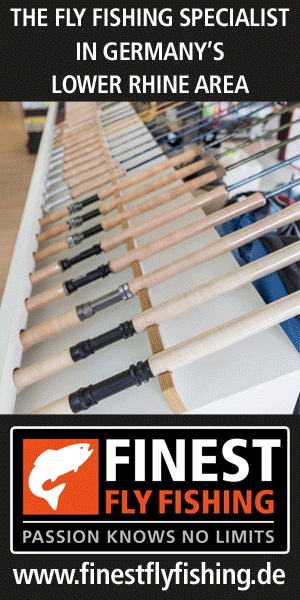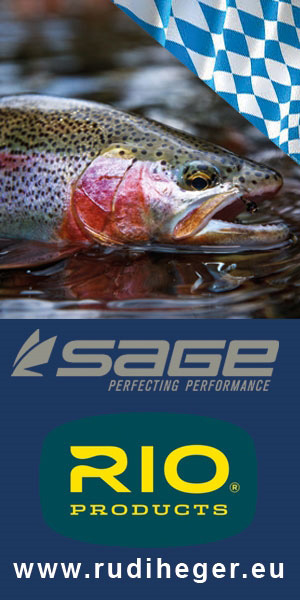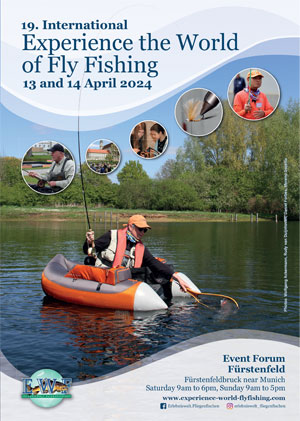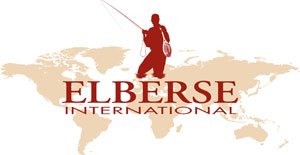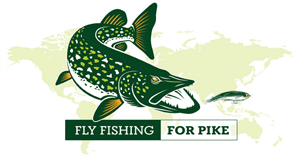The Irish folk song ‘The Irish Rover’ is about a magnificent, but unlikely sailing ship which goes down in an unfortunate way. The song has been covered by many artists. Around the middle of September we went to Ireland looking for Irish rovers that could entertain us.
First of all we were guests on board of the ‘Leah’ of skipper Donal Kennedy of Killala Angling Charter. The Killala Bay in the north-west of Ireland has the big advantage that people can fish here even when there is a fresh wind from directions between south-east and south-west. There is no swell here under these circumstances and because the wind is coming from the shore, the waves are not that high either. Like many Irish charter-skippers, Donal did not have flyfishers on board before, but he addressed our wishes perfectly well. These wishes consisted of making drifts across water that was not overly deep, between eight and fifteen meters, if possible.

The fresh wind of our first day on the water pushed the boat forward with a considerable speed, because of this we could not reach the bottom with our superfast sinking flylines when the water was more than about fifteen meters deep. Donal, we soon found out, knew this area like the inside of his pocket and made several long drifts possible for us. Drifts that brought us a lot of takes and fish, mainly pollack in different sizes, but also coalfish and mackerel; the coalfish was one of the fish species we wanted to aim for during this years trip. We used flyrods of nine feet long for line-classes #8 – 10, fast sinking, 300 to 500 grain shooting heads or complete full sinking flylines like the Airflo S7. To the tippets of our fluorocarbon leaders we knotted streamers like the Clouser Minnows in different colour combinations. I myself fished for the most part with worm and shrimp imitations, hoping to get a take of a wrasse; but this day our ‘bag’ consisted of pollack, coalfish and mackerel. We kept a few fish for the table, the rest of the fish were all returned.
Airborne
Eventhough the weather forecast was quite the opposite, our second day of fishing started without any wind at all. In the area around Lough Conn and Lough Cullin are several rivers that hold pike and we followed one of these towards the lake; walking and casting our pike flies across the river on our way down.

We had a few takes and some pike followed our streamers, but the tiny midges that had emerged because of the calm weather made that we kept our walking speed along the waterside. Too bad the mosquito oil was still in the B & B… Once we arrived at the lake, we did not have as many problems with the midges any more, although the marks remained visible for a number of days.

The first fish was a fish of over 90 cm in length, with an incredible strength and it was also willing to go airborne several times. Parts of water-plants kept attached to the leader and this made fighting the fish not exactly any easier, but Markus was finally able to lift the pike in front of my camera.

My German fishing buddy Mario Sanz waded out into the lake as well and found himself with a deeply bend rod after just a few casts as well. Another ninety-plus fish, one with a deformed head, which made her performance on the end of the line not any less impressive. Markus and Mario than both hooked a pike each almost at the same moment and fought these shoulder to shoulder. When I thought I had enough pictures of all the action, I made some casts as well; I hooked two pike within the next few minutes, but both threw the hook during the fight. Because we had an appointment with a guide near the Pontoon Bridge Hotel around noon, we had to start to walk back to our cars shortly thereafter; but having landed a good number of big pike made the day a success already.

Exceptional fishing
When the circumstances are right, that means not too much wind and only small amounts of rain, than one can enjoy a truly exceptional fishing for pike on Lough Conn and Lough Cullin. During the summer the water in the shallow parts of these lakes is often too warm for the pike and they will disappear into deeper water. When there is a lot of rain and wind, the lakes will turn murky across many parts and it becomes useless to fish a streamer for pike on those days.

But when you hit it right, you can enjoy a fishery of which dreams are made of. It turned out to be this way during our one and a half days on the water with fishing guide Kenny Sloan. Kenny has specialized himself in flyfishing for pike and this is also the method of fishing he likes himself most of all as well. With two boats we made drifts close to the area where we had fished before while wading and we kept getting takes one after the other. More than once we were in the boat fighting a pike on the flyrod each, which made for some hectic moments and beautiful photography.

The second day the typical Irish weather with a fresh wind and some rain returned and now we needed to use a drift bag in order to slow the boat down while drifting across the waves. For the most part we drifted across water with a depth of little more than two meters up to less than one meter, a depth that can be fished well with floating or intermediate pike flylines. The mad swirls that occurred when a pike took the fly in shallow water made the fishing extra spectacular. The acrobatics that nearly all of the pike performed once hooked made for several long line releases, but we still managed to land over fifty pike between the four of us in those two days. At least ten of those were over ninety centimeters in length, but the majority was still between 70 and 80 centimeters. The largest fish measured 98 centimeters and it took one of my Vitesse type pike streamers.

Being spoiled
The Aasleagh Lodge is situated more to the west in Ireland, close to where the river Erriff runs into the longest ‘fjord’ of Ireland. The Aasleagh Falls is a favourite spot among many nature photographers, especially because you can see salmon jumping the falls here during the season. Next to the waterfall a fish ladder has been build where the salmon are also counted when they make their way upstream. Because of fish ladders like this one and the buying out of professional fishermen all across Ireland, more and more salmon and seatrout are returning to the rivers and this means there is a far greater chance for flyfishers to hook into a salmon or seatrout on rivers like the Erriff, in fact anywhere across Ireland. Sportfishermen will, I am glad to say, also return more and more of the salmon they have landed; seatrout have to be released anyway.

A remarkable fact of the Aasleagh Lodge is that she is run by Inland Fisheries Ireland. It is a beautifully restored 19th century estate that was in ownership with the marquis of Sligo and which has now nine large guest-rooms available for people that want to fish the Erriff or other waters in the area. In the restaurant you can not only enjoy the view across Killary Harbour and the surrounding mountains, but also the excellent kitchen of the lodge. The kitchen mainly uses local products and fresh fish from the sea. After a day spend on the river or at sea, you are treated here in a special way once more. The breakfast forms a solid start for your fishing day, if you want you can take a packed lunch along as well.

The river Erriff is, over a length of twelve kilometers, divided into nine beats, each of which hold several promising pools. These beats rotate on a daily basis among guests of the Aasleagh Lodge. On most beats two rods are the maximum per day, on some beats three rods are allowed. A single handed flyrod for a line-class #8 – 9, with a length of ten or eleven feet, is sufficient to fish most of the pools. Next to that a lightweight twelve to fifteen feet double handed flyrod is worth trying as well, sometimes you can present your salmonfly just that little bit better with this.
Evening session
Floating flylines or lines with an intermediate tip are all that you need to fish most of the beats under normal circumstances, a floating flyline in combination with an intermediate or sinking leader is another possibility. Favourite patterns for the Erriff are the Cascade, Munro Killer, Silver Rat, Stoats Tail, Willie Gunn, Garry Dog and different shrimp patterns in hook sizes 6 – 14. Toby spoons and Flying C spinners are used when the river runs high and dirty.

From April to June a run of ‘spring salmon’ enters the river, from the middle of June it is the grilse that will appear in most catches. Even in the period from July until the first part of September new fish will run the river on a daily basis. Because we had an evening session planned at sea (there was again too much wind for this during the daytime), we only had a few hours available to fish the river Erriff. Eventhough we saw some salmon jump on our beat, both Mario and myself only landed a good-sized seatrout each. Kevin Crowley, he works for IFI as well, was present to accompany us and as it turned out, he handles the flyrod really well too.

For the evening session we went out to sea from Rossaveal with the ‘Maigdean Mara’ of skipper Kevin Mac Gabhann. The hard wind had gone down in force a bit, but we still had to make drifts close to shore, in the shelter of the main land.

Again it was mainly pollack that we managed to hook on our flies, but as an extra a beautifully coloured cuckoo wrasse came tot the surface on one of my casts. Despite its small mouth, it had taken a good hold of my seabass streamer. The fish may not be too impressive in size, even though they can grow to several pounds in weight as well, but the exceptional colours most certainly are impressive.

Salmon
One of our last days of fishing in Ireland in 2012 and the stormy wind that was blowing was even going to increase in strength during the day. De upper one of the three lakes of Kylemore Abbey was our destination for this day, whereby we hoped to hook some seatrout and possibly even a salmon from a drifting boat. The wild and exciting Kylemore Abbey Fishery is situated amidst the mountains of Connemara and close to the Atlantic Ocean, it consists of the Kylemore, Middle and Castle Lakes plus some eight kilometers of the river Dawross that runs into the sea at Ballynakill bay. The small river is heavily overgrown and not easy to fish, salmon and seatrout will run the river and into the different lakes almost all through the year and offer excellent sport for the visiting flyfisher.

The boat was filled with fishing stuff and photo equipment and Kevin manoeuvred to a sheltered area where we would start our first drift. We had only drifted for a hundred meters or so, placed our flies in front of us and fished them back, when Kevin hooked into a nice fish close to the shore. It turned out to be a salmon of some four to five pounds in weight which gave a good account of itself during the fight and which was quickly returned after taking a few shots. With the force of the wind full in our backs, one could hardly speak of a controlled drift. Even with the drift bag in the water and Kevin on the oars the boat made numerous unexpected movements. We had a few firm takes on our flies, possibly of seatrout, but it was hard to fish in a controlled way. After a few hours we decided to call it a day and head back for shelter in the lodge. We will surely return here, for the salmon, seatrout, the pollack and especially the pike. The song text “And I never will play the wild rover no more” has little resemblance with our future intentions!
Rudy van Duijnhoven

Information
Inland Fisheries Ireland
– Markus Müller/Kevin Crowley
Ardnaree House, Abbey Street,
Ballina, Co. Mayo, Ireland
Tel. +353 (0)96 – 22788
Email: markus.muller@fisheriesireland.ie
Website: www.fisheriesireland.ie
Kenny Sloan, fishing guide
Tel +353 (09492 – 56501
Mobile +353 (0)87 9670310
Website: www.pikemania.co.uk
Email: ksloan@eircom.net
Aasleagh Lodge
Leenane, County Galway
Ireland
Tel. +353 (0)95 – 42252
Fax +353 (0)95 – 42361
Email: erriff.fish@iol.ie
Websites: www.aasleaghlodge.ie
www.errifffishery.ie
Keadyville House B & B
– Michael & Barbara Kelly
Ballycastle, County Mayo
Ireland
Tel. +353 (0)96 – 43288
Email: keadyvillebandb@hotmail.com
Enniscrone / Killala Angling Charter
– Donal Kennedy
Enniscrone, County Sligo
Ireland
Tel. +353 (0)96 – 36644
Mobiel +353 (0)86 – 817 4509
Website: www.dkennedyangling.net
Rossaveal
– Kevin Mac Gabhann, skipper of the ‘Maigdean Mara’
Tel. +353 (0)86 – 854 7890
Website: www.galwaybayfishing.com
Email: kevin@galwaybayfishing.com
